Ambulia: species and maintenance in the aquarium
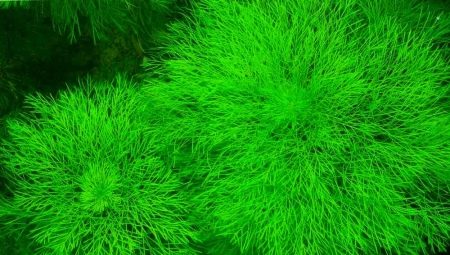
Lymnophila aquatic is a tropical plant that prefers natural reservoirs and swamps of Southeast Asia. In its homeland, it is considered a weed, which is ruthlessly destroyed in order to protect rice fields from it. But not so long ago, ambulia began to be kept in home aquariums due to its delicious appearance and beneficial properties.
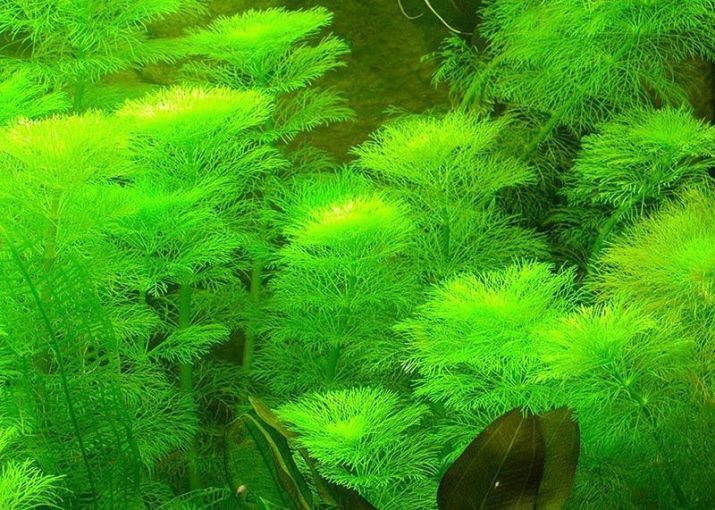
Aquarium types of vegetation
Since the cultivation of a water flower began to be dealt with relatively recently - only 30 years ago, the aquarium culture was appreciated by many. Its popularity is due to the unpretentiousness of the plant. Despite this, you need to know the basic requirements for caring for ambulia in order for the plant to remain healthy, beautiful and bloom periodically.
Three types of equatorial vegetation are most suitable for aquarium breeding:
- water (or royal) ambulia - Limnophila aquatica;
- fragrant - Limnophila aromatica;
- sessile-flowered - Limnophila sessiliflora.
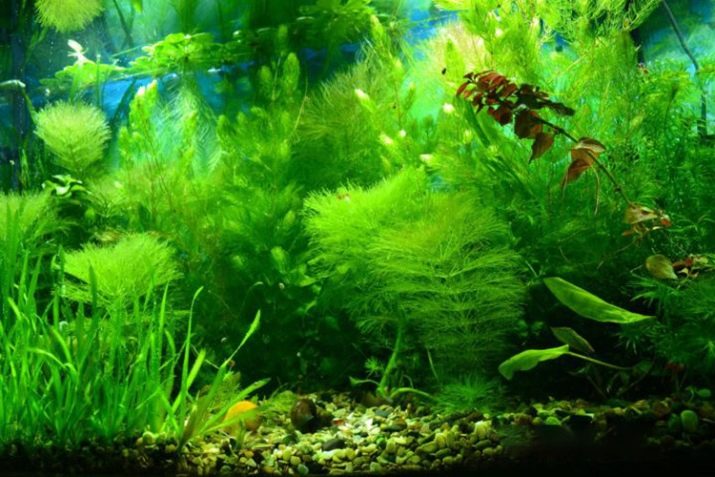
There are 35 species of limnophila in the world today, but most of them are not suitable for the aquarium hobby. This is due to the fact that in an artificial reservoir, the maintenance of representatives of the tropical flora is of a certain difficulty. In particular, this applies to the Indian plant species Limnophila indica. If the leaves or stems are damaged, ambulia releases poison that can lead to the death of other inhabitants of the aquarium.
This vegetation can only be cultivated separately from fish and snails in a personal tank, but in general it is unassuming to environmental conditions.
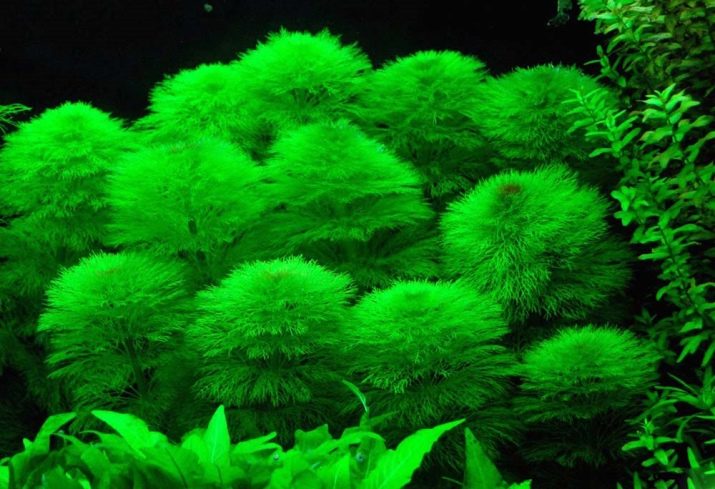
Royal
The aquarium plant royal ambulia (Limnophila aquatica) has a lush spherical crown formed by numerous densely growing leaves deeply dissected along the edges. They are narrow, extremely soft and delicate, have a lamellar morphology, due to longitudinal cell division, up to 10–13 leaves can be located on one node of the axial organ of the plant (leaf sinus bud).
Its stem is long and rather thick, about 6 mm in diameter, but it is difficult to see it behind the abundance of dense green mass, which it supports in an upright position. At home, this species will need a sufficient volume of water, since limnophila grows up to 0.5 m in height, but in the wild it can reach 1 m.For this reason, its other name is giant.
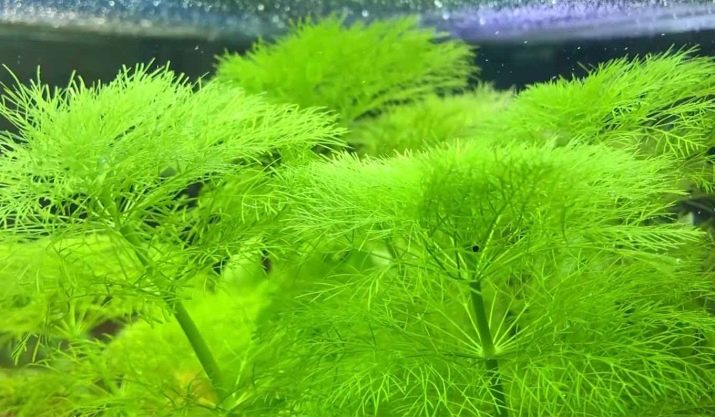
The spherical top of the plant with curly curls of greenery is large and forms a circle of 12 cm. In addition to its magnificent decorative appearance, it has a beneficial effect on the microenvironment of the aquarium due to its filtering function.
A feature of ambulia is her amazing sleep and wake hours. Closer to 9 o'clock in the evening, the plant folds its leaves, even bright lighting cannot interfere with this. The "sleeping beauty" wakes up in the morning, unfurling its luxurious emerald-green crown.
If properly kept in artificial conditions, limnophila can throw out many small blue flowers, becoming a real decoration of the underwater interior.
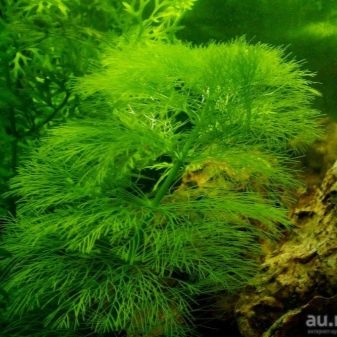
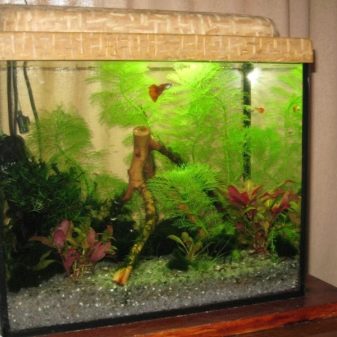
Ambulia in the aquarium can feel comfortable if a number of requirements are met.
- An exotic plant needs a lot of light, so the daylight hours should be 10-12 hours. When there is not enough light, the stems can stretch a lot.
- The preferred water temperature is 23-28 degrees, lower parameters retard the growth of grass.
- The soil can be fine gravel, pebbles or sand with a small amount of clay for the development of the root system. The soil requires constant cleaning from various growths and silt.
- Limnophila feels good in clean water, so you should install a filtration system and additionally carry out a water change once a week.
Royal limnophila is propagated by dividing the roots, which must first be carefully untangled and then transplanted. You can do this using cuttings - they are cut at a distance of 20 cm from the top of the plant. It is necessary to plant children 3 cm from other bushes.
Ambulia combines well with any thermophilic ornamental fish, and it is advisable to plant it near the back wall of the aquarium, where it will create an exotic background from openwork thickets.
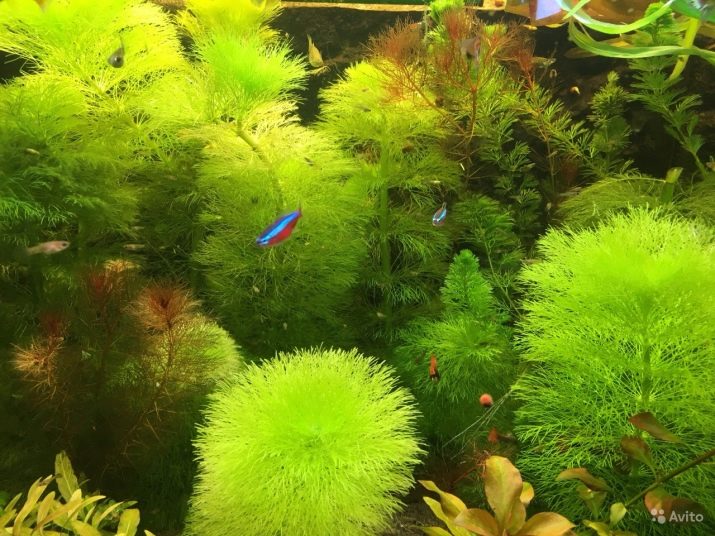
Sessile-flowered
The plant is also called dwarf ambulia. The grass has a straight and tall stalk with reddish and green leaves resembling feathers. When it grows to the surface, a large number of young twigs emerge from it, densely covering the surface of the water. Thus, the plant can grow both under water and above it. With good care, limnophila forms beautiful white flowers. Sizes of an adult plant: width - from 4 to 7 cm, height - from 15 to 40 cm.
Conditions necessary for the normal functioning of a tropical grass:
- warm water: not lower than 18 and not higher than 30 degrees;
- the plant does not have the ability to grow on stones, so it is better to place sand 6 to 10 cm thick at the bottom, and if the soil contains iron, then the shade of the leaves is likely to be reddish;
- in the case of dwarf ambulia, the small presence of silt does not play a role, moreover, it is used by it as a nutritional supplement;
- the optimum acidity of the medium is 5–8 units, while the hardness can be different - from 0 to 20 units.
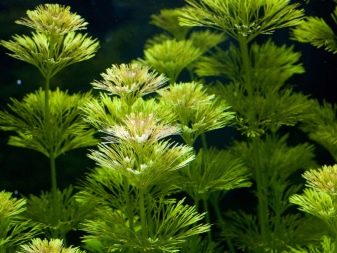
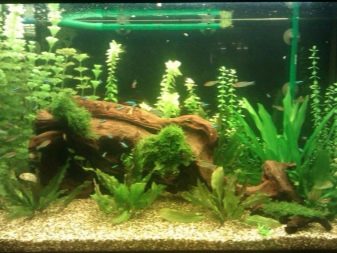
The sessile-flowered variety is not very demanding on lighting, but with prolonged poor light it looks faded and not so attractive.It is very easy to damage the delicate and extremely vulnerable root system of vegetation, so cleaning the soil must be done with care.
Putting things in order, it is periodically necessary to shake off the bushes of the plant, because it filters any small particles in the water, restoring the ecological balance of the artificial reservoir.
Propagated by limnophila cuttings 10 cm in size, which are immediately planted in the ground. Within a few days, the grass takes root and begins to live an independent life.
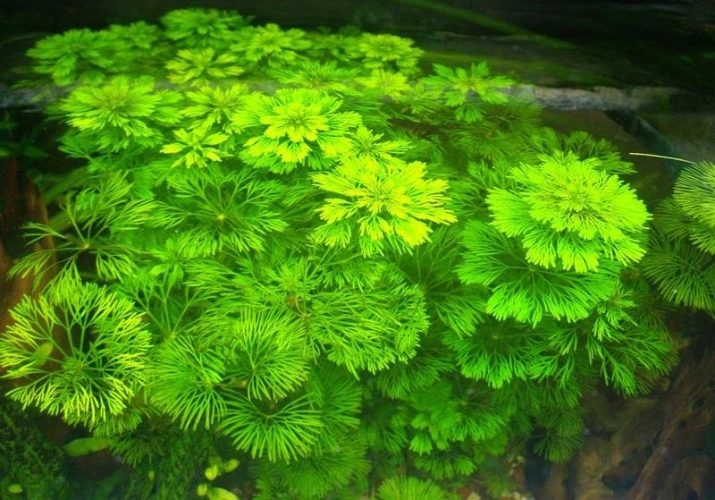
Aromatics
A distinctive property of aromatic ambulia - constant change of the point of growth (every 7 cm), which is why its stem can be both erect and creeping along the bottom. The size of the bushes reaches 17 cm in diameter. The leaves have a different color range: from salad green to brown, their underside is often lilac. The shape of the leaves is pointed towards the tip, they are all the same length. There are about 8 pieces in one whorl.
The leaves acquire a purple tone when they are in the above-water part of the aquarium, and their shape becomes more rounded - this may be a sign that flowers will appear soon.
Aromatics is the most difficult plant to maintain, which requires a tank with walls of at least 50 cm and a volume of 80 liters. The vital activity and appearance of the grass depend on the hydrochemical characteristics of the water.
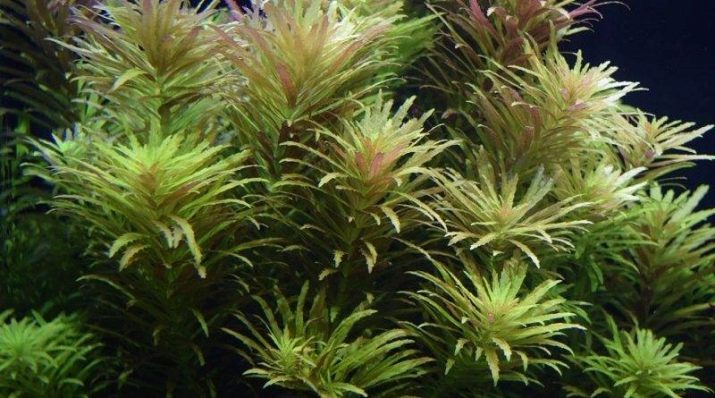
Required parameters:
- rigidity - within 3-14 units;
- acidity values - from 5.5 to 7 units;
- temperature - 23-28 degrees.
At lower and higher temperatures, the growth and development of ambulia stops, and the composition largely affects the color of the leaves. The water must be constantly cleaned with filters, and also replace 1/4 of the volume. This figure cannot be exceeded, as this can lead to undesirable changes in water parameters.
Lack of light (less than 10-13 hours a day) causes pallor of the leaves. With good lighting with 0.8 W / L lamps, the plant turns red. Lymnophil also requires feeding with iron, phosphates, nitrates, potassium and spraying carbon dioxide, without which the normal course of photosynthesis is impossible. As for the soil, then sandstone or small pebbles are suitable for the plant; a mixture with a high iron content is placed on the bottom beforehand.
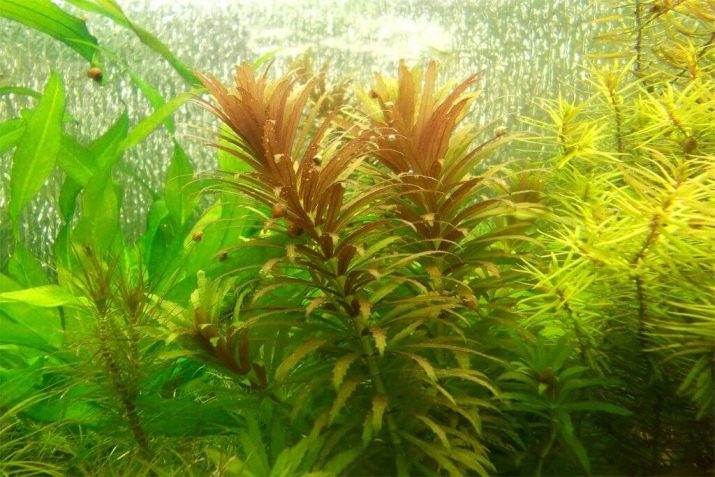
Aromatics need periodic pruning of the upper shoots in order to exclude shading of the lower leaves, leading to their rotting. Ambulia should be propagated by cuttings that form the root system and begin to grow after 2-3 weeks or a little later. It is permissible to plant the grass in a vegetative way. For this, the lateral stems with several well-developed leaves are separated.
An exotic plant is planted in 3, 5 and 7 bushes, since this way the thickets look more aesthetically pleasing than in the background or middle background, where they often have to be cut off. The main rule is not to plant tightly.
For more information on the features of ambulia, see the next video.








